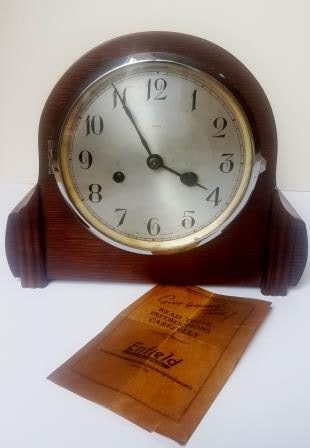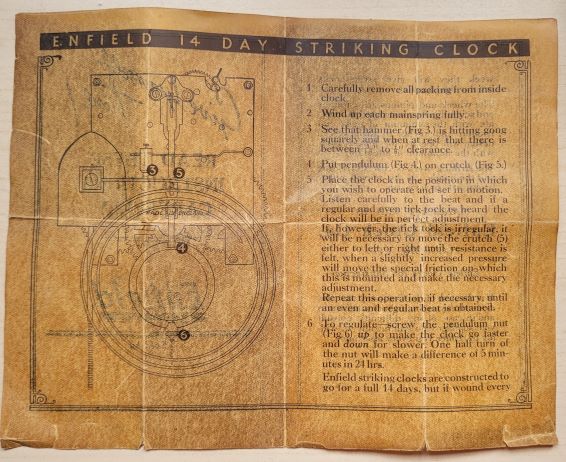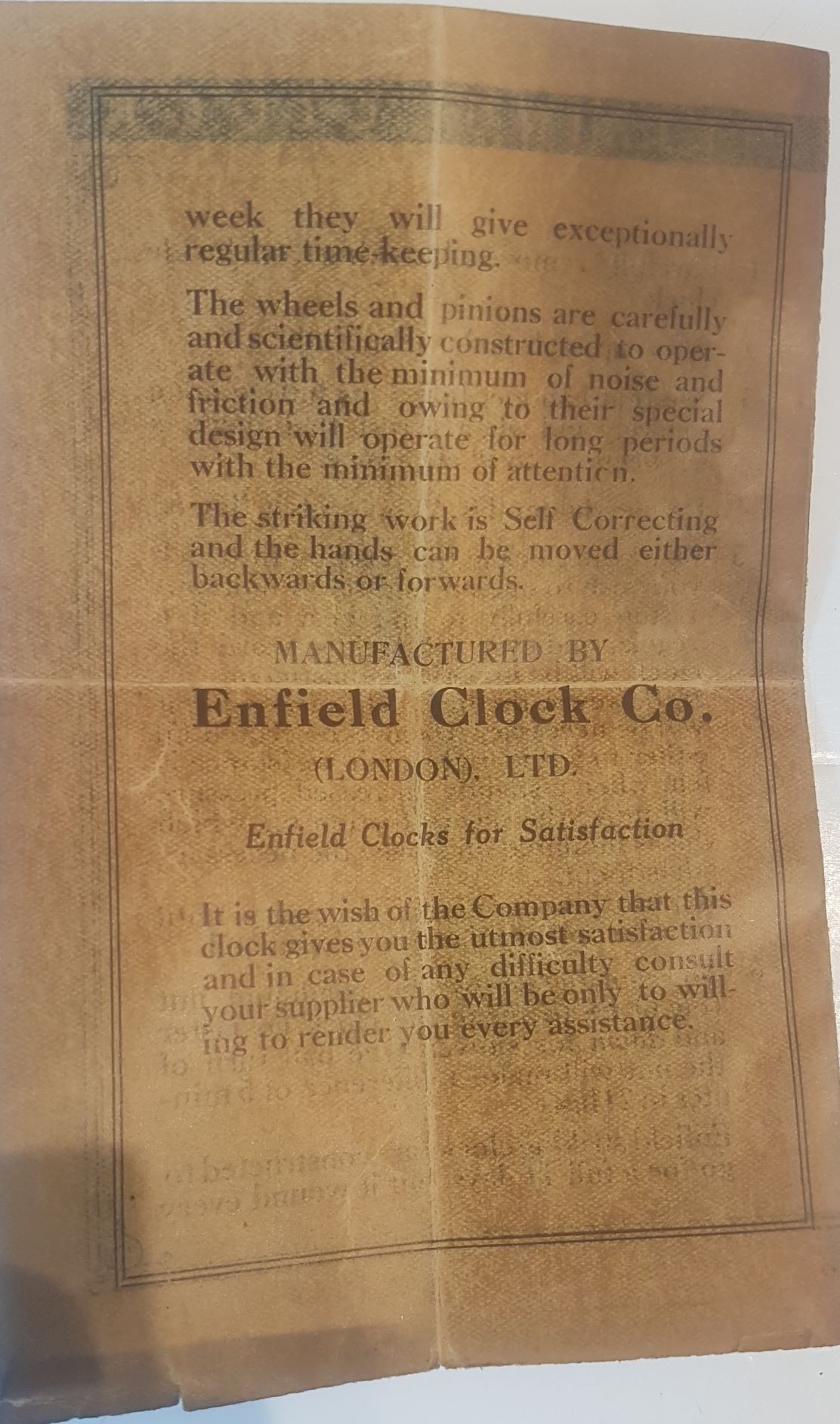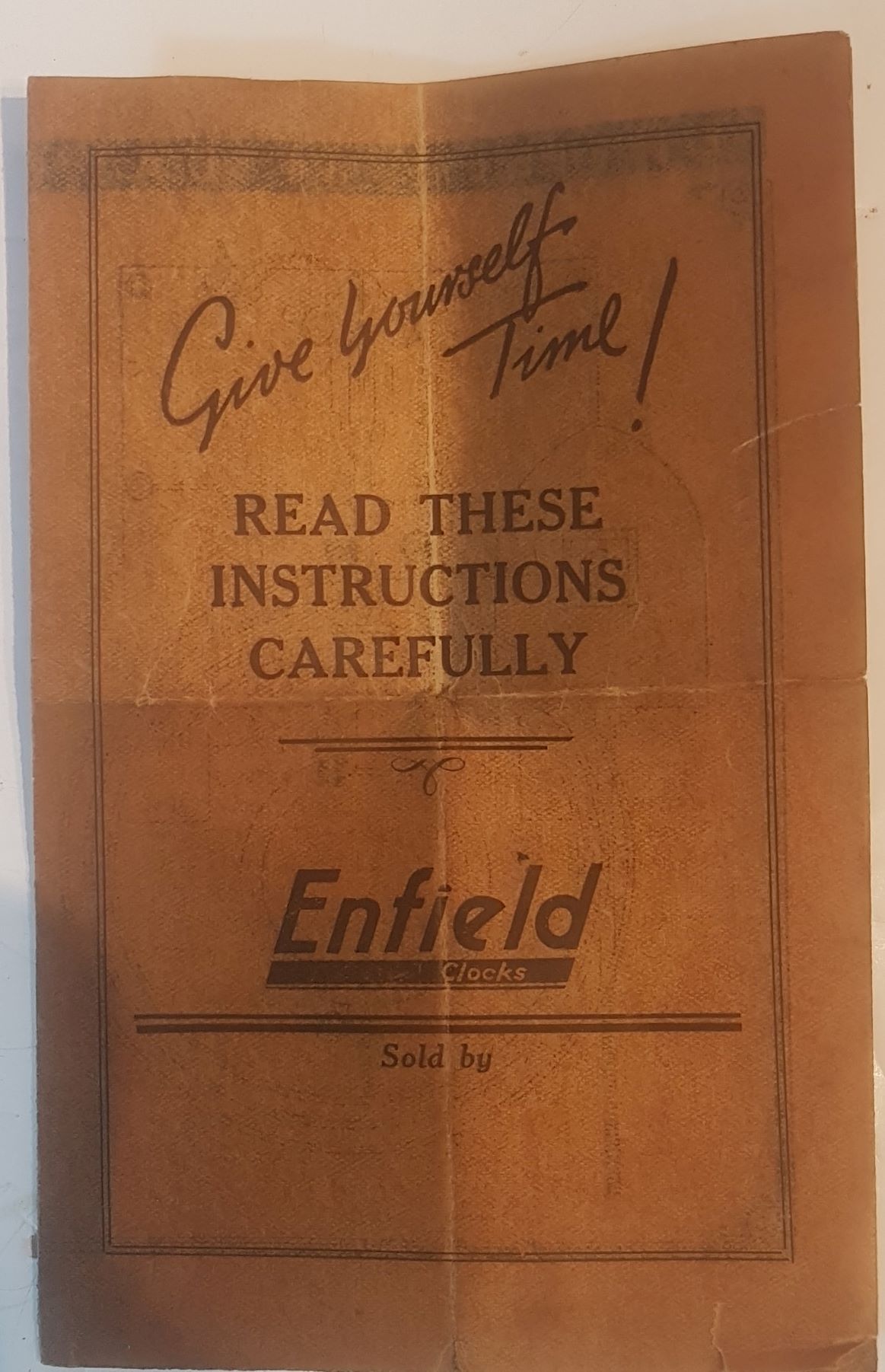There is something sad about the paired item at an auction – the one that is lumped in with a more appealing piece because alone it is unlikely to sell on its own merit. It was just such a clock which reintroduced me to a bygone age of unassuming courtesy and the wonderful richness of language.
* I hadn’t even wanted to buy them. Registered to bid in an online auction, I was just flexing my bidding muscles, putting in a low bid on an early lot I wasn’t too excited about, but which I wouldn’t mind having. I was confident that someone would go another fiver and I would miss out. They didn’t and, against my better judgement, I had become the owner of a pretty Edwardian inlaid mantel clock…
I hadn’t even wanted to buy them. Registered to bid in an online auction, I was just flexing my bidding muscles, putting in a low bid on an early lot I wasn’t too excited about, but which I wouldn’t mind having. I was confident that someone would go another fiver and I would miss out. They didn’t and, against my better judgement, I had become the owner of a pretty Edwardian inlaid mantel clock…
…and a rather indifferent Enfield mantel clock.
You know the sort. Everybody’s Nan had one, on the grey or beige tiled mantelshelf, beneath the picture of ‘Tina’, above the open fire, in front of the semi-circular hearth rug with the black scorch marks where low grade coal had spat its smouldering embers.
Enfield Clock Company, a British business, had set up in 1929, granted permission by the Enfield Cycle Company to use the name on condition that the clocks were made to the same high standard as the bikes. Initially they mass-produced movements for export or to retailers in the UK to ‘case up’ themselves. But as early as 1933 they were feeling the bite of competition and sold out to Smiths Industries, their combined endeavours benefiting from the economies of scale.
Between Hitler and the Welfare State
Outwardly, Smiths, Enfield and Smiths Enfield branded clocks only differed in the names on the dials. By 1949, Enfield had ceased to be marketed as a stand-alone brand.
So the squat, oak veneer cased, 1930s Arabic letter-faced clock, sitting apologetically on my workbench, started life sometime between the rise of Hitler and the founding of the Welfare state. Its beginnings straddled the horrors of World War 2. It may be unprepossessing, but it must have some stories to tell.
In a day, I dismantled it, cleaned it and reassembled the movement. I retouched the smudged lettering on the dial where sweaty fingers had pushed on the minute hand because Grandad had forgotten to wind it. I waxed the case.
Battenberg cake and Christmas decorations
And to be honest, it looks a treat. It keeps perfect time, striking on the half hour and the hour. I have forgiven it its dullness. In fact, I rather like it, in the way that I still keep a place in my heart for Battenberg cake slices, lumpy blancmange and the concertina paper Christmas decorations with which it would have shared so many sitting rooms during the 1950s and 1960s.
But the real bonus was to be found within the case itself. Tucked away, beneath the movement, in the dusty recesses behind the chime pillar, was a small brown, faded, waxed leaflet. It must have been there since the clock was first bought, over 70 years ago.
‘Give yourself time!’ it exclaims in a chatty script typeface. Then, more somberly, ‘Read these instructions carefully’ in bold caps, before closing with the racy italicised Enfield logo beneath.
The centre spread provides a neat number-labelled diagram and six clearly written instructions on how to set up your clock. It is the clarity, the confident assertion of the instructions, that strikes home. This is not IKEA or one of those Argos pictures-only incomprehensible guides. Enjoy this:
If however the tick tock is irregular, it will be necessary to move the crutch (5) either to the left or to the right until resistance is felt when a slightly increased pressure will move the special friction on which this is mounted and make the necessary adjustment.
Explain that with diagrams alone, if you can!
Rendering every assistance
There is a beauty and a dignity in the language. For anyone who appreciates words, this will resonate with a warm glow.
So next time you buy a gazebo from Argos or a phone from Apple or a garden chair from B&Q, check if they sign off with this level of commitment and style –
It is the wish of the company that this clock gives you the utmost satisfaction and in case of any difficulty consult your supplier who will be only too willing to render you every assistance.
Then wonder whether, almost a century on, it will still be giving ‘the utmost satisfaction’.
Read more about the history of Enfield and Smiths Clocks in The Price Guide to Collectable Clocks by Alan and Rita Shenton. See more clocks from this era here.
And thank you to a blog reader for the suggestion that I should show all page from the leaflet. Here goes…



Would it be possible to add photos of the leaflet in full size? I’m sure many owners of Enfield clocks would appreciate.
Peter – hi
Thanks for reading and for the suggestion. The clock, complete with its leaflet, has been rehomed but I do have pictures in my files which I will load onto the site for all Enfield fans.
Hugh
Ninety years on and still doing its best. Strange the notion of ‘fashion’. That such a clock would be chosen, no doubt, with care and thought and yet ‘Time’ seems to seal its fate and eventually abandon it in the ‘Unwanted’ column.
Yet some quirk of human nature at some point makes such an item desirable again, sees its worth, simple beauty and returns it to the ‘Wanted’ aisle again. It deserves another chance to feature in people’s lives and show its charm in celebrating the passing of each day.